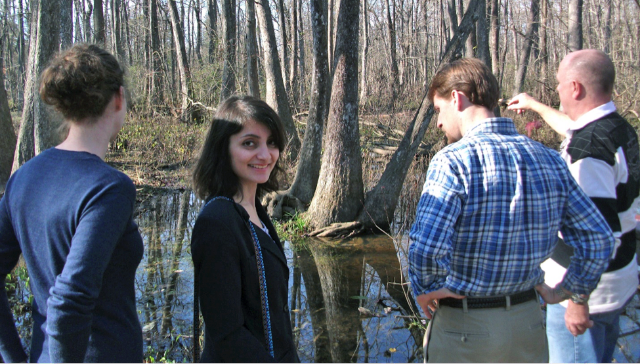Vientiane is the capital of Lao PDR, and though I tend to hate all Asian capitals, I've grown to like Vientiane (along with Phnom Penh). It's a sleepy town, but very pedestrian friendly and bike friendly.
However, 1 to 2 days should be enough for you to see the most of Vientiane. I've written about Buddha Park already, but here are some other sights to enjoy while you're in the city for a day, and all can be done on foot!
1. The Laos National Museum
This museum was originally built in 1925 as the French governor’s residence, but now, it focuses on the history of Laos albeit from an anti-American stance, highlighting the Laotian people’s struggle to free the country from foreign occupiers and imperialist forces. Although the museum from the inside is in disarray, what is worth noticing is the anti-American rhetoric.
After I went home, I discovered that the US was involved in a secret war in Lao. Much of the northern part of Lao was bombed by the Americans to fight the Communists in Vietnam. In fact, the US pledged support to the Royal Lao Government and conducted nearly 600,000 bombing runs in an attempt to oust communist forces throughout the sovereign state. Predictably, it was not the combatants but rather the civilians who suffered most, and they were not communists. They were simply innocent people.
2. Morning in Wat Sisaket
Wat Sistaket is the oldest monastery in Lao, well known for the number of Buddha images inside. It's best known for the Buddha statues as well as some really interesting Buddha photos. What I found interesting is how Buddhist is visualized in Lao, that is very different from in India and Korea too.

The temple was built in 1818 on the order of King Anouvong. Kind Anouvong was the last king of Vientiane, who led the Lao rebellion against the Siamese. Surprisingly, he built this temple in the Siamese style of Buddhist architecture, with a surrounding terrace and an ornate roof, rather than in the Lao style.

It is believed that this design actually helped in keeping it safe, when the armies of Siam sacked Vientiane. When the French colonialists arrived, they restored Wat Si Saket in 1924 and again in 1930. The temple houses a museum and is well known for a line of ceramic Buddha images.

3. Presidential Palace
Once done with the Wat, head over to the Presidential Palace where you will see lots of Asian tourists taking pictures. It is just opposite the Wat Sisaket and is a new building designed in 973 as the residence for Laos’ royal family. When the communists took over, the construction of this palace was delayed.
The palace looks very grand and European, with White House feels. I couldn't enter is since its closed off to the public. Now, the Presidential Palace is only a venue for government functions – the president’s actual home is actually located in a separate suburb of Vientiane.
4. Patuxai Park and Victory Gate
Across the Presidential Palace is a large highway road that leads up to the Patuxai Park. Patuxai means Victory Gate or Gate of Triumph. It is a war monument dedicated to those who fought in the struggle for independence from France.
Though I didn't know it, Patuxai Victory Gate is meant to resemble a famous structure called the Arc de Triomphe in Paris. However, the Vientiane version is a tad bit taller, made of concrete, and is Laotian in design with some Lao mythical creatures. It was built from funds given by the US to build an airport, expect the Lao government built this.
5. City Center Wats and Coffee
A few less frequented Wats can be visited in the city center. One is Wat Inpheng, which was built in the 16th century but destroyed in 1827 by the invading Siamese army. Later, it was rebuilt and has since been renovated several times. The other is Wat Ong Teu. It is well known for the large, bronze Phra Ong Teu Buddha in the temple. Like the other Wat Inpheng, it got destroyed by the Burmese, and later reconstructed. Both the wats are located near great coffee shops (and Vientiane has great and cheap coffee so don't miss it!)
Though you're going to be sick of seeing temples, this one could be easily fit in with a visit to the Anouvang park across. I never know how to pronounce this temple, but its located conveniently on the riverfront road. Just directly opposite it is a nice shady park called Anouvong Park and the Chao Anouvong statue, where you can relax afterwards. Wat Xieng Nyeun is mostly overlooked by the crowds of tourists that flock to the better-known alternatives. It means visitors can get a more authentic glimpse of the daily workings of a Buddhist temple. Its also right next to a great massage place.
7. Finish at the Night Market
As you walk along the riverfront from the Park, if its after 5 - 6 pm, you will see stalls being set up. That is Vientiane’s night market. Though the stuff is not so great, it is fun to walk through. I'd say its a little like the underground markets in Seoul, but cheaper. You can, however, get some $1-2 shorts and summer attire.
Not bad!
Some food is also sold there, but I'd advise against the food. It may not be the most hygienic. Instead, a few options would be to try out the House of Fruit Shakes, Ray's Grille Burgers & Mexican, Common Ground or any local Laos food you fancy!








0 comments